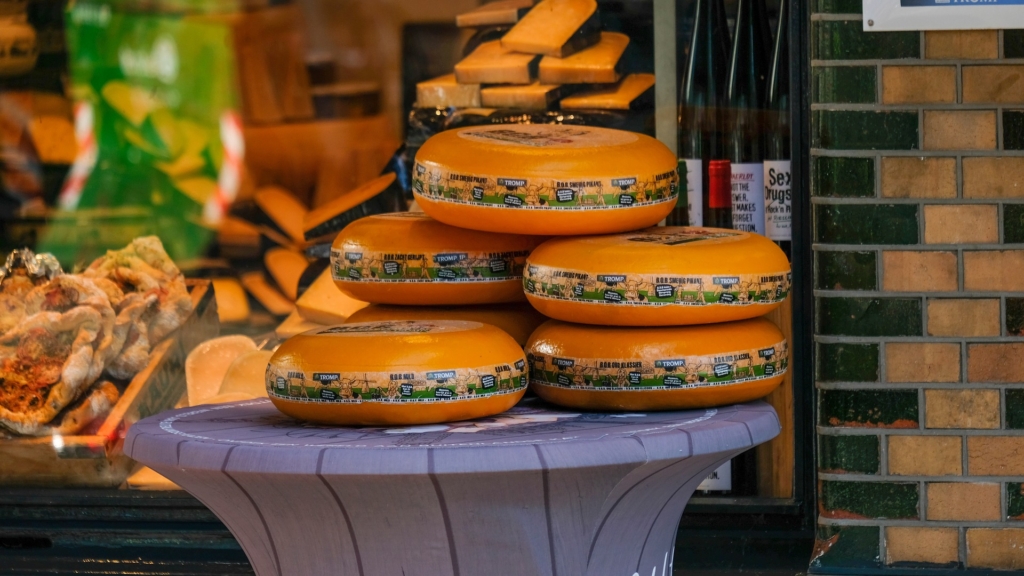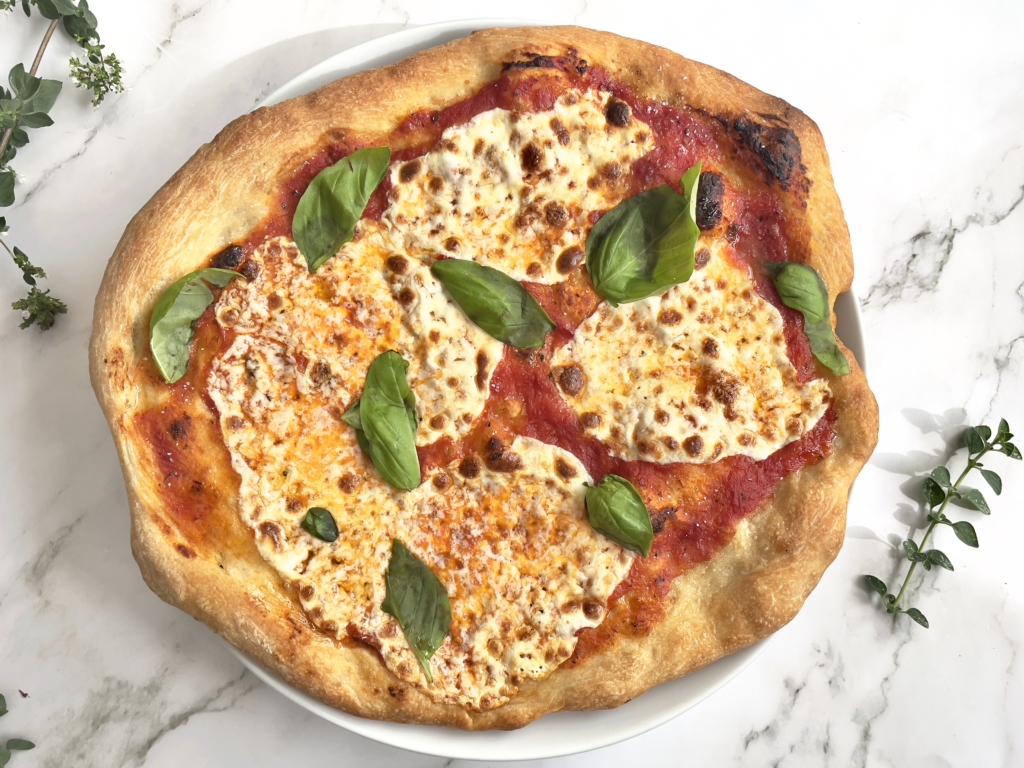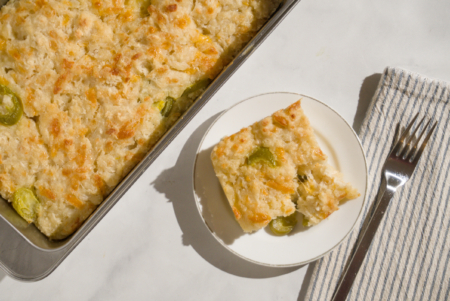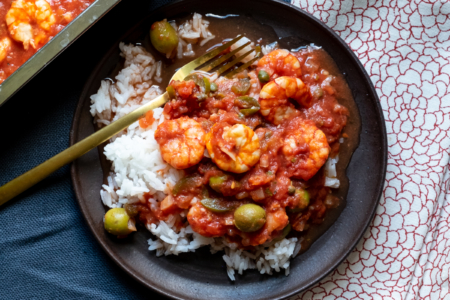Whether served on a charcuterie board, melted into a pasta sauce, or added to a grilled cheese sandwich, gouda’s sweet and buttery flavor is sure to satisfy.
History of Gouda
Gouda is considered one of the oldest varieties of cheese still being produced today. The earliest recorded evidence of the Dutch cheese dates back to 1184, over 800 years ago. Gouda is named after the city of Gouda in South Holland, but not for the reason you think. Though the cheese was being made throughout the Netherlands, the city of Gouda had acquired the sole rights to trading and selling it. As the cheese could only be bought in Gouda, the city’s name became synonymous with it.
Though gouda cheese can now be found throughout the world, enthusiasts of the famous Dutch cheese still visit the traditional cheese market in Gouda during the summertime to celebrate its origins.

Taste and Texture of Gouda
Like most cheese varieties, the flavor and texture of gouda develop significantly with age. Younger gouda has a very mild, milky, and slightly nutty flavor while aged gouda is sharp and salty with a buttery, caramel-like sweetness.
Gouda is considered a semi-hard cheese. Younger varieties are smooth and dense with a slight bounce where pressure is applied. Aged gouda, meanwhile, is noticeably firmer but with a flaky and crumbly texture when sliced.

How Gouda is Made
Gouda is made from raw or pasteurized cow’s milk treated with bacteria and rennet. When the milk coagulates, the whey is drained and the curds are washed with water and pressed into cheese molds. They are then brined, dried, and aged to the desired maturity.
Although the cheese’s production isn’t restricted to the Netherlands, true gouda cheese is protected by EU trade laws and has the word “Holland” stamped on the rind.

Uses for Gouda
Gouda is extremely versatile. It’s an excellent melting cheese and works wonderfully in pasta sauces, pizzas, and even on a basic grilled cheese sandwich. It’ll also be right at home on your charcuterie board. We especially love using aged gouda for this. Its buttery sweetness is a great foil to salty, spicy, and tangy flavors.

Feature Image: Flickr user eelke dekker ( CC BY 2.0 )



